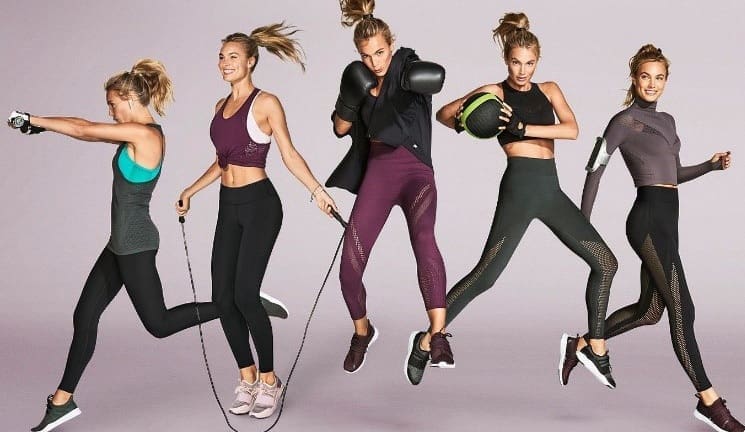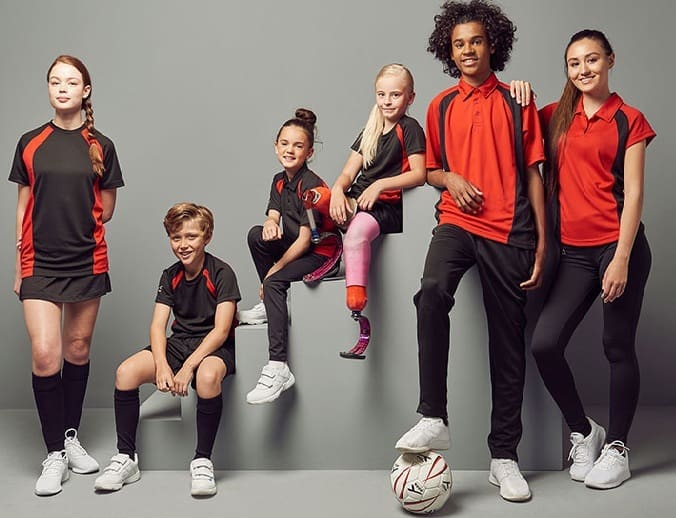1. Introduction
Technical textiles have been classified in to various categories such as industrial textiles, agro textiles, medical textiles, geo textiles and so on. Amongst the various textiles in which the individual textile occupies relative importance to the other, Sports textiles contribute 10% of the world technical textile market. Increase in demand of the sports textiles is due to the demand and also by new innovations in the fibre manufacture, process and finishing treatments. Two different raw materials like hydrophobic and hydrophilic are used to develop the functional knitted structures for leisure wear, sportswear which
improves the comfort of the wearer. Sportswear textiles belong to a category called Sportech, which is
one of the mainstream technical textiles. This rising interest in the Sport Tech is due to a number of
social factors that include increased considerations of wellbeing and good health, growth of indoor and
outdoor sports facilities and the ever-increasing pursuit of the adult population of activities outside
the home or workplace. Among the fabrics, knitted, non-woven, or woven, knitwear fabrics has always
been associated with relaxed clothing and fashion. Hence, sportswear has been developing as a strong element in the present conditions finding its applications in many sports like cricket, golf, football etc. Many definitions were given for sportswear and znbroadly defined as “clothing designed for comfort or informal wear.” Sports garments are now standard everyday wear, especially among younger generations. The interactions between these two areas of influence, sports and fashion, are
an important source of new trends in both industries.

Increasing interest in the sportswear and casual or urban fashion could be due to the dramatic increase in participation in sports activities and interest in health and fitness in the last few years. This has been reflected in the expansion of market for sports specific apparel. The global sportswear market is
expected to grow at a CAGR of 6.8% over the next five years. At the same time, the share of sports
apparel in amateur sports is around 85%.
2. Problems with Conventional sportswear
Any fabric either made out of woven or knitted materials should have adequate comfort characteristics required for some specific applications. In the case of a formal wear where the activity of the body movement is not severe, the fabric may have sufficient air permeability, able to transmit the heat out from the body and better moisture management capability. However, for the sportswear fabrics where the activity is severe, it requires the above-mentioned properties in an improved manner so as to provide comfort to the sports personnel. Conventional sportswear lack in proper absorption of sweat from the body and hence leads to stickiness and clogging of pores. This leads to increase in body temperature and brings down the performance of the player. Activewear needs to provide a thermal balance between the
heat generated by the body while engaging in a sport and the heat released into the environment. Normal activewear garments do not always fulfil this requirement which will eventually lead to thermal stress.

3.Basic requirements of a sportswear fabrics
During the sports activity especially in high active sports like tennis, football heat stress will be of great concern due to generation of metabolic heat which is in the range of 800 to 1200 W depending upon the activity, physical body conditions of the wearer. Due to this, the core temperature of the body increases by 1 to 2 degree Celsius and moreover the sweat generation will be around 2.5 litres/hour. To control the core temperature of the body, heat of vaporization of water takes place to enhance the cooling effect of the body, sportswear fabrics should have the ability to absorb the sweat, dissipate to the environment and provide cooling effect to the wearer.
In other words, the high active sportswear should satisfy the following requirements
• High stretch and elastic recovery for sufficient freedom to the wearer
• Compression athletic wear (CAW) also called as “skin suits” which provides necessary comfort and anatomic fit to the body. They conform to the natural curves of the body and acts as second skin.
4. Fibres for Sportswear
Natural, synthetic, regenerated and specially developed fibres are available to manufacture sports textiles. Fibres commonly used are
• Natural fibres – Cotton
Generally, not preferred as it absorbs and retain moisture although it possesses good softness and comfort.
• Synthetic fibres – Polyester, Polyamides, Nylon
• Regenerated cellulosic fibres – Lyocell, Bamboo
• Speciality fibres – Hygra 20, Killat N23, Lycra 25, Dacron
5. Yarn requirements
Twist in yarns and linear density play a major role in sportswear fabrics for moisture transmission. It has been reported that higher twist coefficient and linear density decrease the moisture management properties like absorption time, wetting time and maximum wet area circle radius. Increase in twist coefficient improves the air permeability, water vapour permeability and wicking height but absorption is reduced. Micro denier polyester yarn is suitable as it gives better moisture transmission, faster rate of evaporation and good cooling effect when compared to that of the spun polyester, PC and 100% cotton materials.
6. Fabric parameters
➢Single knit structures
Single jersey fabrics provide higher moisture absorption and better wickability than that of the knit-tuck fabrics. Since it has only knit loops it can be oriented lengthwise in wale direction and provides better wickability than that of the knit-tuck structures. Fabric comfort is characterized by factors such as porosity, pore size, thickness, density and tightness factor. Slack fabric with lower contact angle has better water evaporation rate and higher wicking rate as compared to other different knitted structures.
➢Two layer knitted fabrics
Two layer knitted fabrics has become popular in sportswear. In this construction inner and outer layers
are separate and have unique functionality. The inner layer is made up of hydrophobic fibre and the outer layer is hydrophilic fibre. For example, two layer knitted fabrics made of polypropylene as inner layer facing the skin and viscose or cotton as outer layer. Such type of fabrics exhibits higher overall moisture management capability due to quick transfer of liquid moisture from inner to outer layer.
➢Biomimetics structure
It refers to replicating or mimicking the mechanism found in nature. Biomimetic warp knitted structures
developed with two guide bars using polyester and nylon with branched structures. In this structure, the
inner layer has a smaller number of longer loops than the outer layer. Pumping of water upwards from inner to outer facilitates better water transport properties. In other words, the fabric has faster initial water absorption, quicker spreading and lower air resistance than the other fabrics of similar material and construction.
7. Evaluation methods for sportswear fabrics
Subjective and objective evaluation methods have to be carried out for sportswear fabrics. In subjective
method, wear trials have to be conducted for players by asking them to reveal the comfort after vigorous
activity. The subjects need to be evaluated for sensation comfort of the fabrics like clingy, damp, clammy, heavy etc. Moisture comfort sensory perception is the main contributing factor for sportswear fabrics. There are many objective methods available and some of the important comfort properties required to be evaluated for an active sportswear fabric are
1. Air permeability
2. Thermal conductivity
3. Moisture management capability
4. Water vapour permeability
5. Water absorbency
Air permeability determines the ability of air flow through the fabric. Air permeability is a function of
fabric thickness and surface porosity. In knitted fabrics, the pore size and distribution in a fabric is a function of fabric geometry. Loop length is one of the structural parameters that determine pore size in knitted fabric. When the loop length increases, the air permeability also increases and vice versa.

Thermal comfort is the state of mind that expresses satisfaction with the thermal environment, which means that a person feels neither too cold nor too hot . As an interface between the human body and the environment, textiles play an important role in the heat exchange between the body and the environment. Thermo physiological comfort determines the breathability and moisture management.
It means that it determines both the heat and moisture transport through a fabric, whether the moisture is in the form of liquid or vapour form.
Moisture Management Capability determined by OMMC index by the instrument determines the
capability of fabrics suitable for sports wear fabrics. The instrument provides detail information like wetting time, spreading time, accumulative one-way transport and assigns OMMC index value. Higher the value better the moisture management capability and vice versa.
Water vapour permeability depends on the porosity of the fabric and diffusivity. Diffusivity of water
vapour depends on the fabric type, structure and its construction.
Water absorbency is the ability of the fabric to absorb, penetrate and spread quickly which depends upon
the type of fibre and also the material construction. Regenerated cellulosic fibres has faster absorption rate than cotton layered fabrics because of more porosity.
8. Finishing treatments for sportswear
In general, sportswear gets contaminated easily due to perspiration which leads to growth of bacteria.
Fragrance finished fabrics with microencapsulation and antimicrobial finishes like betacyclodextrin kills
bacteria. Finishing treatments enhance the comfort level by quick wicking and evaporation. Nanodry finish LLC is also found suitable for the fabrics as it increases the absorbency of sweat.
9. Conclusion
Sports textiles is vast and challenging field in which the required functionality can be developed depending upon the fibre, yarn, fabric characteristics and finishing treatments. Moisture management properties have to be carefully observed for any sportswear as it has larger influence on comfort sensation of the wearer. High performance fibres like Cool Max, Thermolite, Thermocool are offered by Advanced Fibre Technology for various sports applications.

